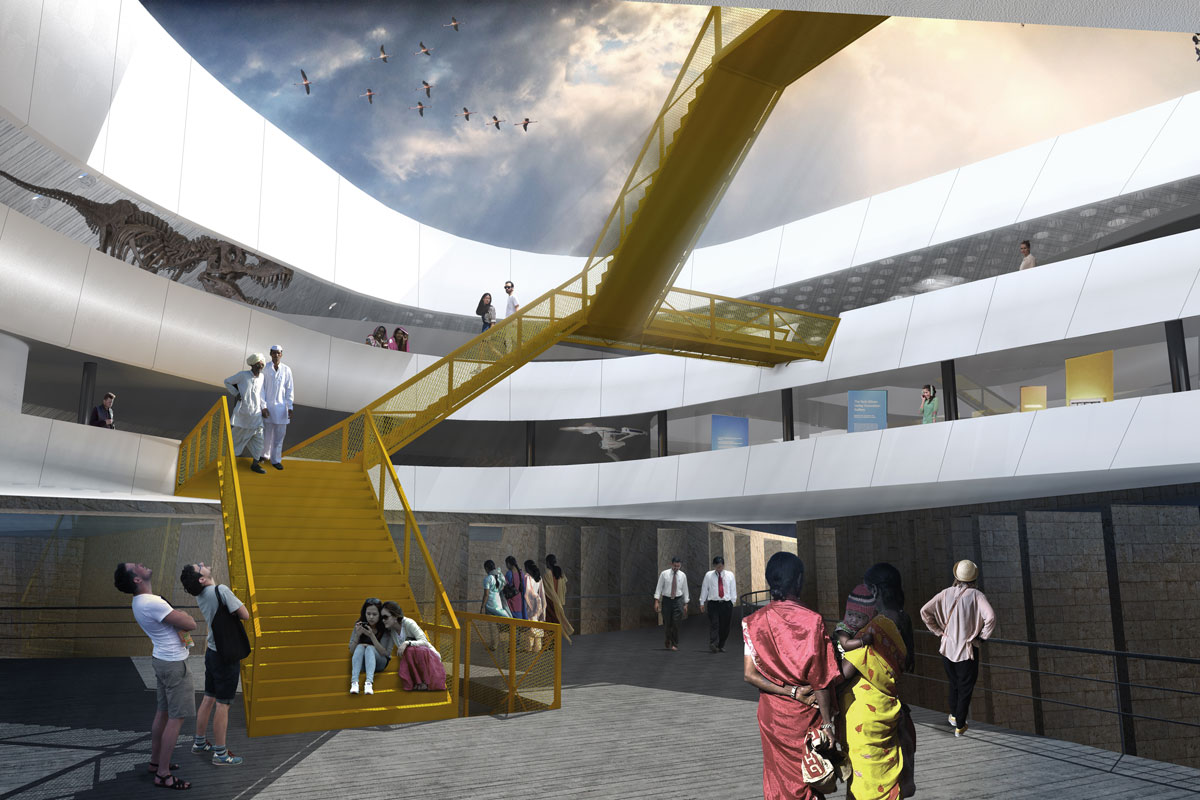Museum of Knowledge
- Competition
- Chandigarh Unbuilt
- Period
- 2015
- Location
- Chandigarh, India
- Team
- VLAA Architects




In the year 1953 the city of Chandigarh was founded. This city – designed by architect Le Corbusier – was built as the new capitol for the Indian part of Punjab; Haryana. Le Corbusier designed the complete layout of the city and built a concrete capitol with all the governmental facilities the city needed. The Museum of Knowledge was never built and left an empty plot in the middle of the capitol. The Chandigarh Unbuilt competition challenged designers to come up with a relevant design for the Museum of Knowledge based upon Le Corbusier’s principles, completing the layout of the city The proposal for a new Museum of Knowledge in the center of the Chandigarh Capitol focuses on creating knowledge and sharing it with the world. The design separates these functions into two main forms. The plinth symbolizes the foundation of knowledge. In here students and scientists find all the supporting facilities they need to do their research. Carried by this foundation is the Utopia: a futuristic exhibition centre. For this building the newest technologies were used, so that not only the exhibition but also the building itself shows the accomplishments of science. Different streams of people meet each other under the Utopia, symbolizing that knowledge can bring people together. Upon arrival under the main building the visitors suddenly enter an overwhelming atrium. Here they are welcomed into the building to experience an exploring journey in the world of science.
